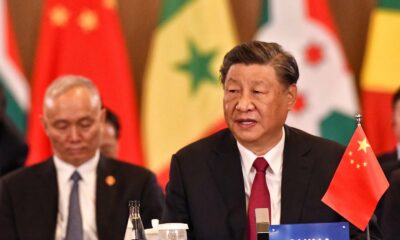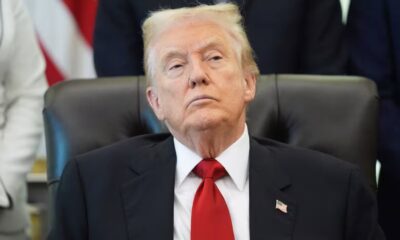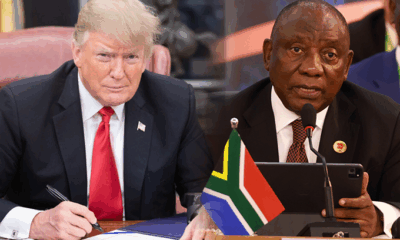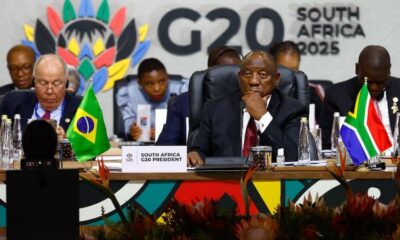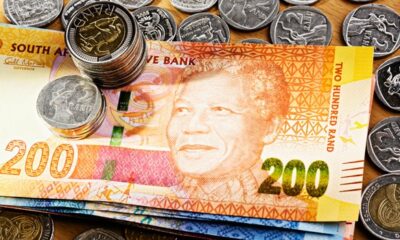News
Trump’s 30% Tariff Threat Sends Jitters Through Markets, But Investors Barely Blink

The Euro Takes a Knock, Mexico Feels the Heat, and Trump’s Latest Trade Flex Barely Moves the Needle.
Global markets woke up to yet another round of Donald Trump-style disruption on Monday as the U.S. president threatened to slap 30% tariffs on imports from the European Union and Mexico — two of America’s biggest trading partners. But unlike previous trade war scares, this one landed with more of a shrug than a shudder.
The euro dipped to its lowest point in three weeks shortly after markets opened in Asia, while the Mexican peso also weakened. Still, the reaction wasn’t exactly dramatic. Traders, it seems, have grown numb to Trump’s fiery trade tactics.
Another Truth Social Bombshell
The tariff threat, which comes via letters Trump posted to his Truth Social account, marks a bold escalation just weeks ahead of his proposed August 1 implementation date.
The European Union and Mexico weren’t impressed. Both condemned the move as unfair and disruptive. The EU, which has suspended its own counter-tariffs for now, says it’s still hoping for a negotiated outcome.
But the markets? They’re not panicking.
“The financial world has become somewhat desensitised to these threats,” said Carol Kong, currency strategist at the Commonwealth Bank of Australia. “This may just be a bargaining chip.”
How the Currency Markets Reacted
While the euro dipped early, it quickly stabilised and was last down just 0.12%, trading at $1.1679. The dollar strengthened slightly against the Mexican peso, rising 0.25% to 18.6699.
Other currencies barely budged. The pound inched down 0.07%, the yen strengthened slightly, and even the Australian and New Zealand dollars only posted minor declines.
It’s a far cry from the market chaos sparked by Trump’s first trade war threats during his presidency.
Beyond the Tariffs: Powell Under Pressure, Inflation in Focus
Tariffs aren’t the only thing Trump’s been stirring. Over the weekend, he took another swipe at Federal Reserve Chair Jerome Powell, suggesting it would be “a great thing” if Powell stepped down. This adds fuel to an ongoing clash over interest rates and central bank independence.
Investors are bracing for key U.S. inflation data on Tuesday, which could offer hints on whether the Fed is likely to cut rates. Currently, markets are betting on about half a percentage point of rate cuts before year-end.
China’s Numbers Don’t Move the Needle Either
Meanwhile, in Asia, China’s latest trade figures showed exports gaining some ground in June and imports bouncing back — a rare spot of positive news. Yet the Chinese yuan held steady, reflecting market caution as investors wait for GDP data expected Tuesday.
Analysts predict China’s growth will slow in the second quarter, with U.S. trade tensions and internal deflation pressures weighing on momentum.
Local Impact? South Africa is Watching the Ripples
While South Africa isn’t directly targeted in this round of tariff drama, local economists and forex watchers are keeping a close eye on global investor sentiment. A stronger dollar typically puts pressure on the rand, and volatility in major currencies can affect commodity prices — one of Mzansi’s economic lifelines.
For Joburg traders and businesses with European or North American links, this fresh round of tariff threats may be more than background noise. But for now, most seem to be waiting to see if Trump’s latest trade sabre-rattling is just more political theatre.
What Lies Ahead?
This isn’t the first time Trump has tried to play hardball with global trade partners — and the markets know it. But with inflation figures due, Powell under fire, and China’s economic pulse slowing, the next few days could reveal whether this is just smoke or the start of another firestorm in the global economy.
Source:Sabc News
Follow Joburg ETC on Facebook, Twitter , TikTok and Instagram
For more News in Johannesburg, visit joburgetc.com

